Ceropegia, often called lantern flowers or string plants, belong to the Apocynaceae family and are known for their unique, tubular flowers and trailing growth habits. With over 200 species spread across Africa, Asia, and Australia, these plants are prized for their ornamental appeal and easy-care nature.
Contents
- 1 Types of Ceropegia Plants
- 1.1 Ceropegia africana
- 1.2 Ceropegia ampliata
- 1.3 Ceropegia anjanerica
- 1.4 Ceropegia arabica
- 1.5 Ceropegia armandii
- 1.6 Ceropegia candelabrum
- 1.7 Ceropegia carnosa
- 1.8 Ceropegia cimiciodora
- 1.9 Ceropegia crassifolia
- 1.10 Ceropegia debilis
- 1.11 Ceropegia decidua
- 1.12 Ceropegia denticulata
- 1.13 Ceropegia devecchii
- 1.14 Ceropegia dichotoma
- 1.15 Ceropegia dimorpha
- 1.16 Ceropegia distincta
- 1.17 Ceropegia fimbriata
- 1.18 Ceropegia fusca
- 1.19 Ceropegia haygarthii
- 1.20 Ceropegia jainii
- 1.21 Ceropegia juncea
- 1.22 Ceropegia leroyi
- 1.23 Ceropegia linearis
- 1.24 Ceropegia nilotica
- 1.25 Ceropegia petignatii
- 1.26 Ceropegia racemosa
- 1.27 Ceropegia radicans
- 1.28 Ceropegia rendallii
- 1.29 Ceropegia robynsiana
- 1.30 Ceropegia rupicola
- 1.31 Ceropegia sandersonii
- 1.32 Ceropegia simoneae
- 1.33 Ceropegia stapeliiformis
- 1.34 Ceropegia vincifolia
- 1.35 Ceropegia woodii
- 1.36 Ceropegia woodii variegata
- 1.37 Ceropegia woodii ‘Silver Glory’
- 1.38 Ceropegia zeyheri
- 2 How to Care for Ceropegia Plants
- 3 Propagation Methods
- 4 Final Thoughts
Types of Ceropegia Plants
Ceropegia africana
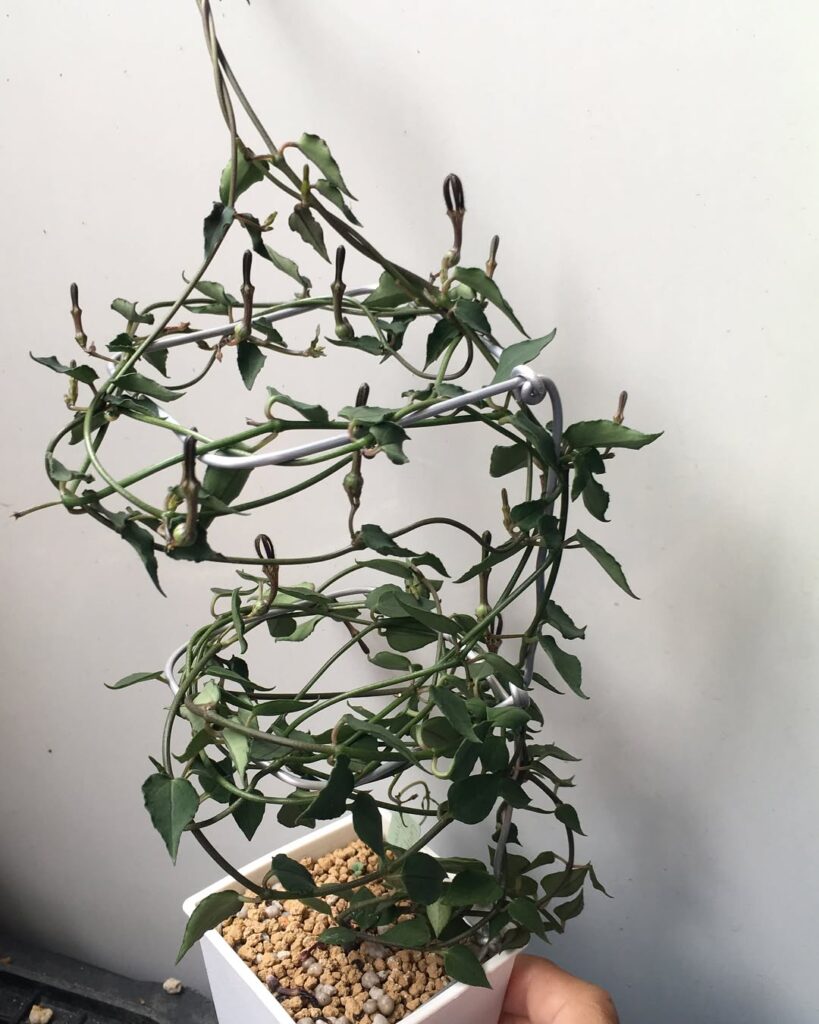
A trailing vine with thin stems and small, tubular flowers.
Ceropegia ampliata
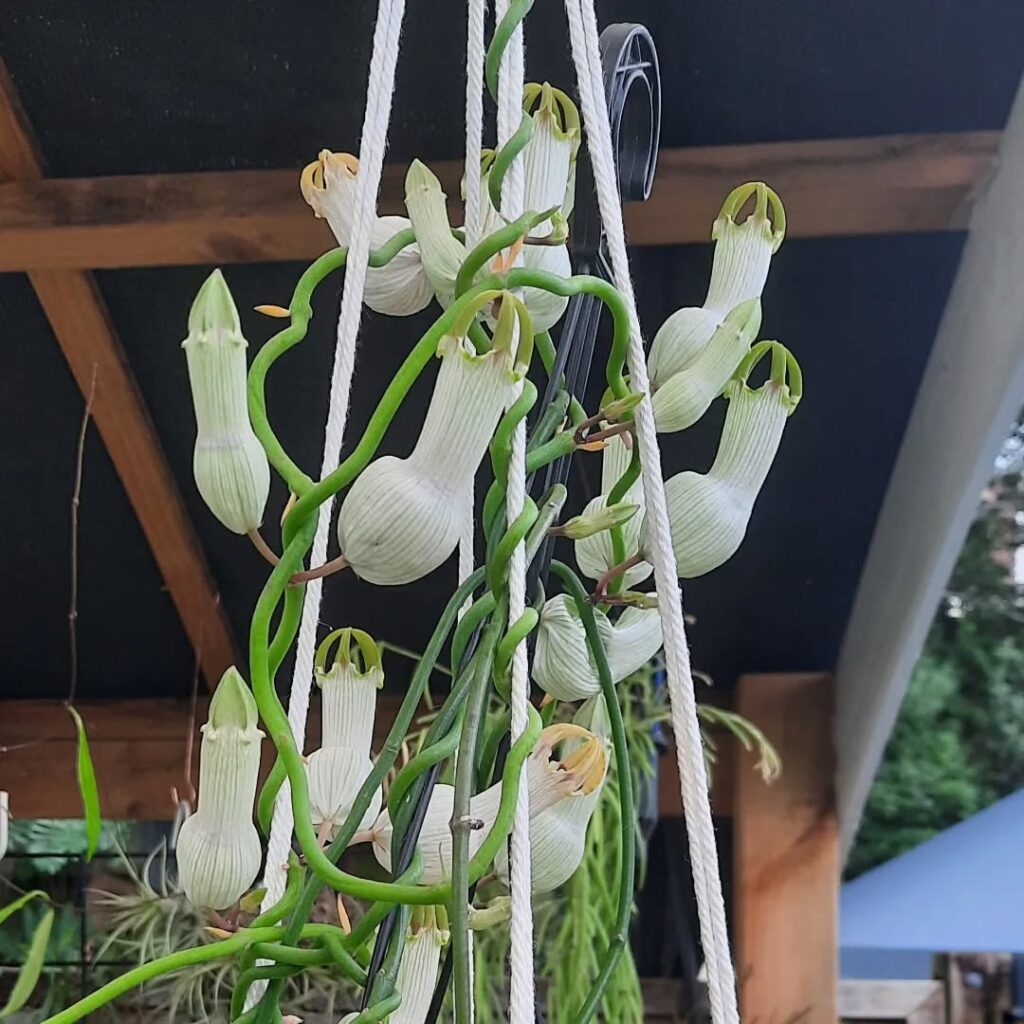
Known for its inflated, greenish-white flowers with elongated tips.
Ceropegia anjanerica
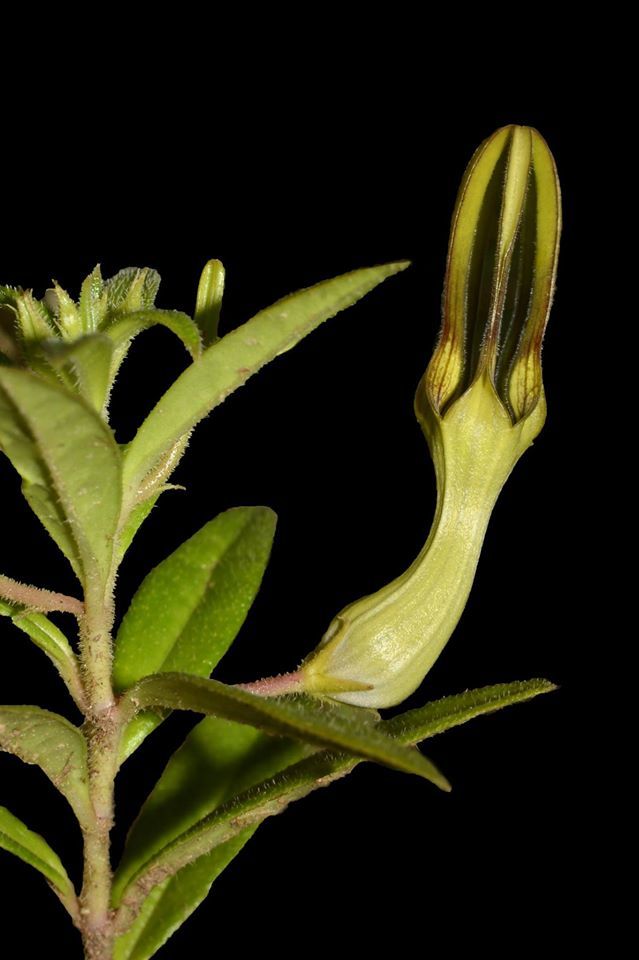
A rare species with delicate flowers native to India.
Ceropegia arabica
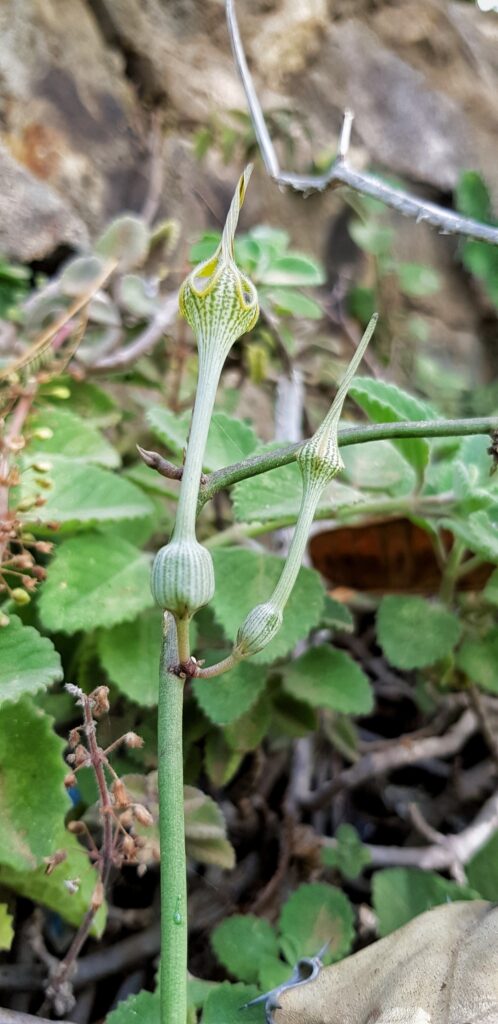
A drought-tolerant vine with slender stems and small blooms.
Ceropegia armandii
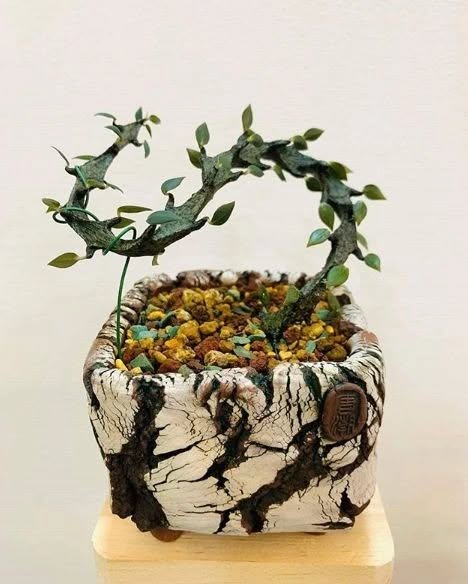
Native to Madagascar, known for its cage-like blossoms.
Ceropegia candelabrum
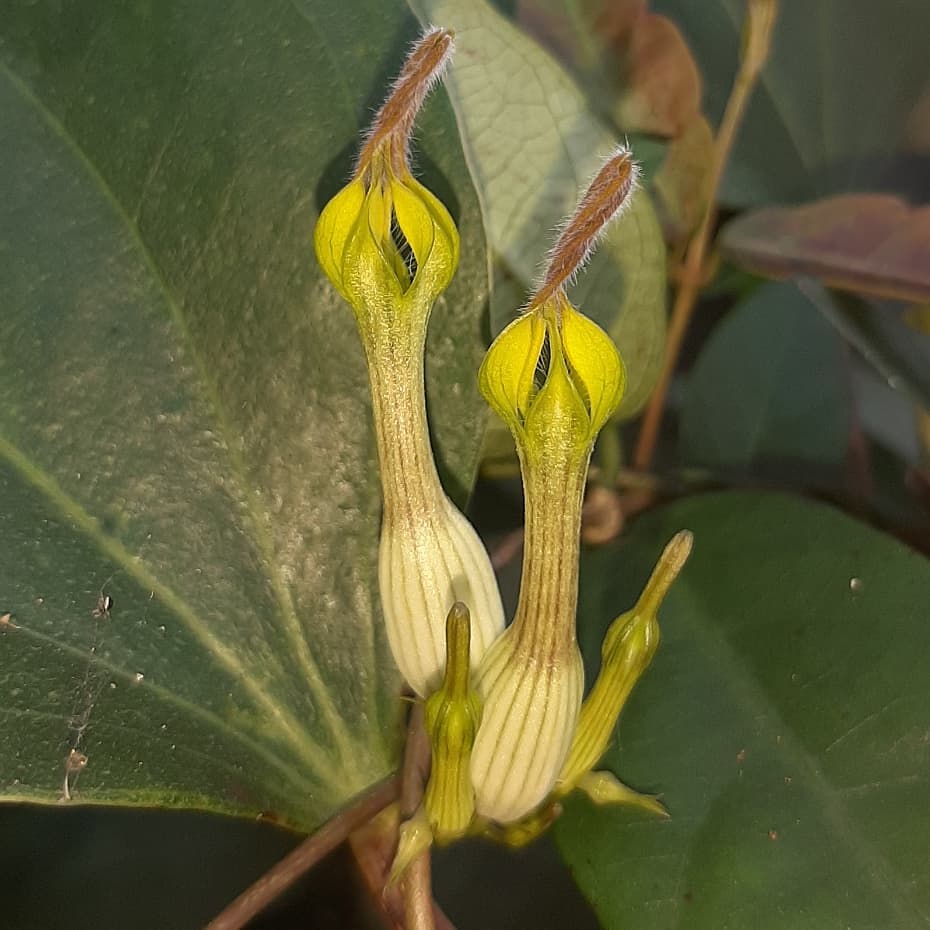
Named for its branching, candelabra-like floral display.
Ceropegia carnosa
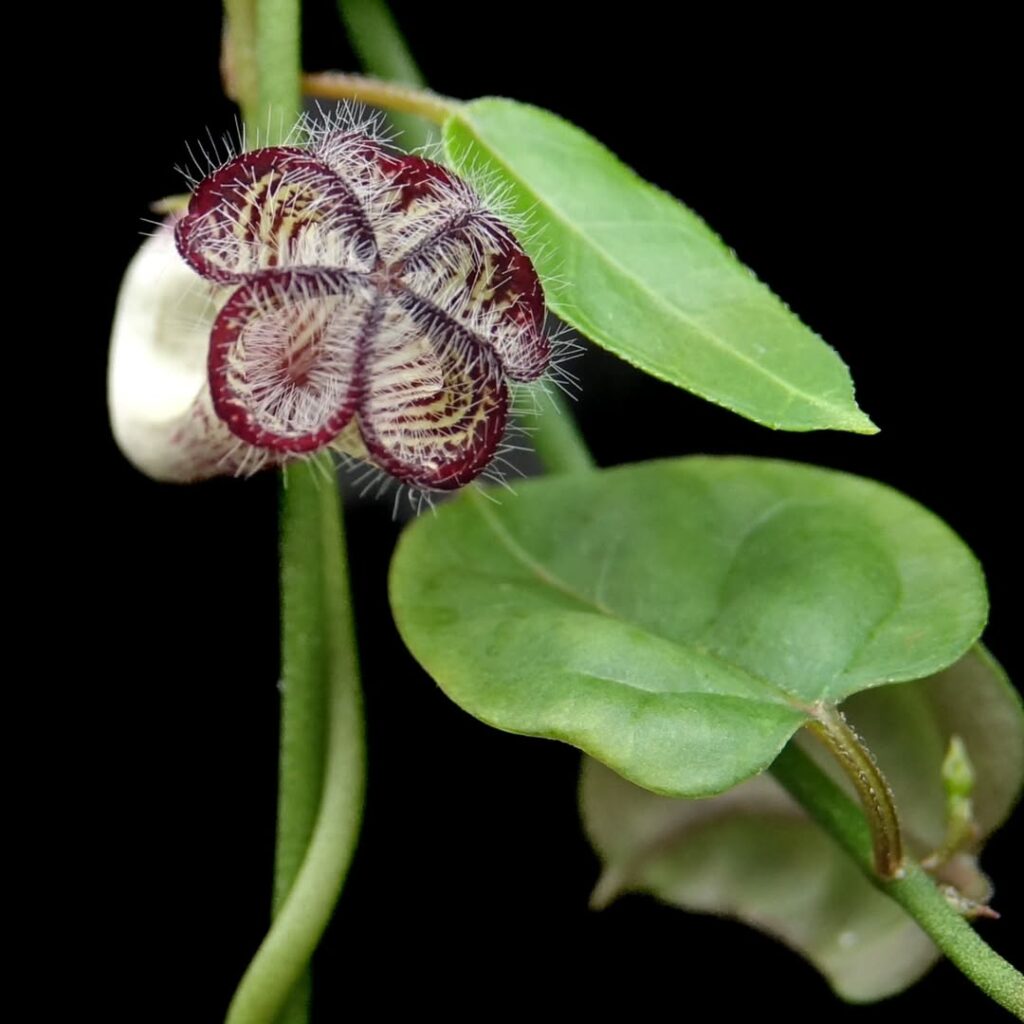
A succulent-like variety with thick leaves.
Ceropegia cimiciodora

Notable for its insect-mimicking floral form.
Ceropegia crassifolia
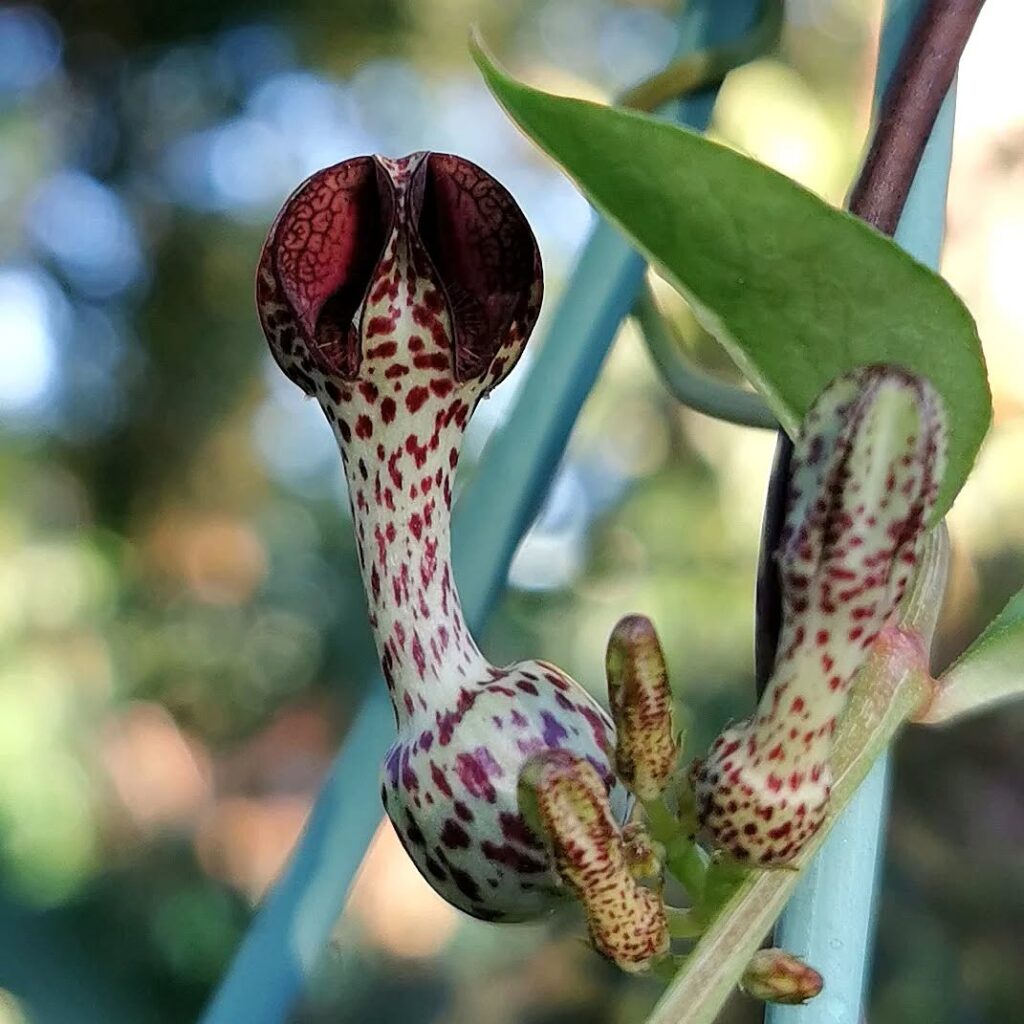
Has thick, fleshy leaves suited for drought resistance.
Ceropegia debilis
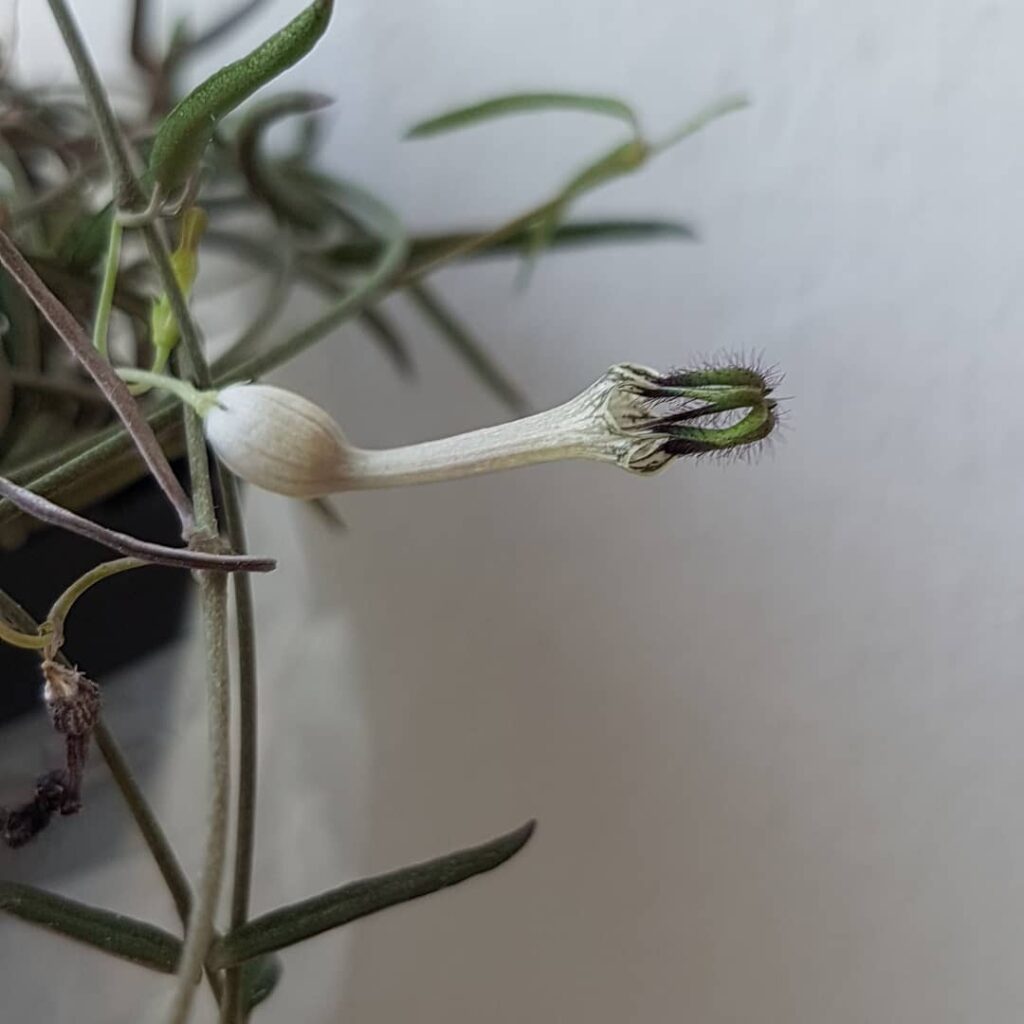
A fragile climber with slender vines.
Ceropegia decidua
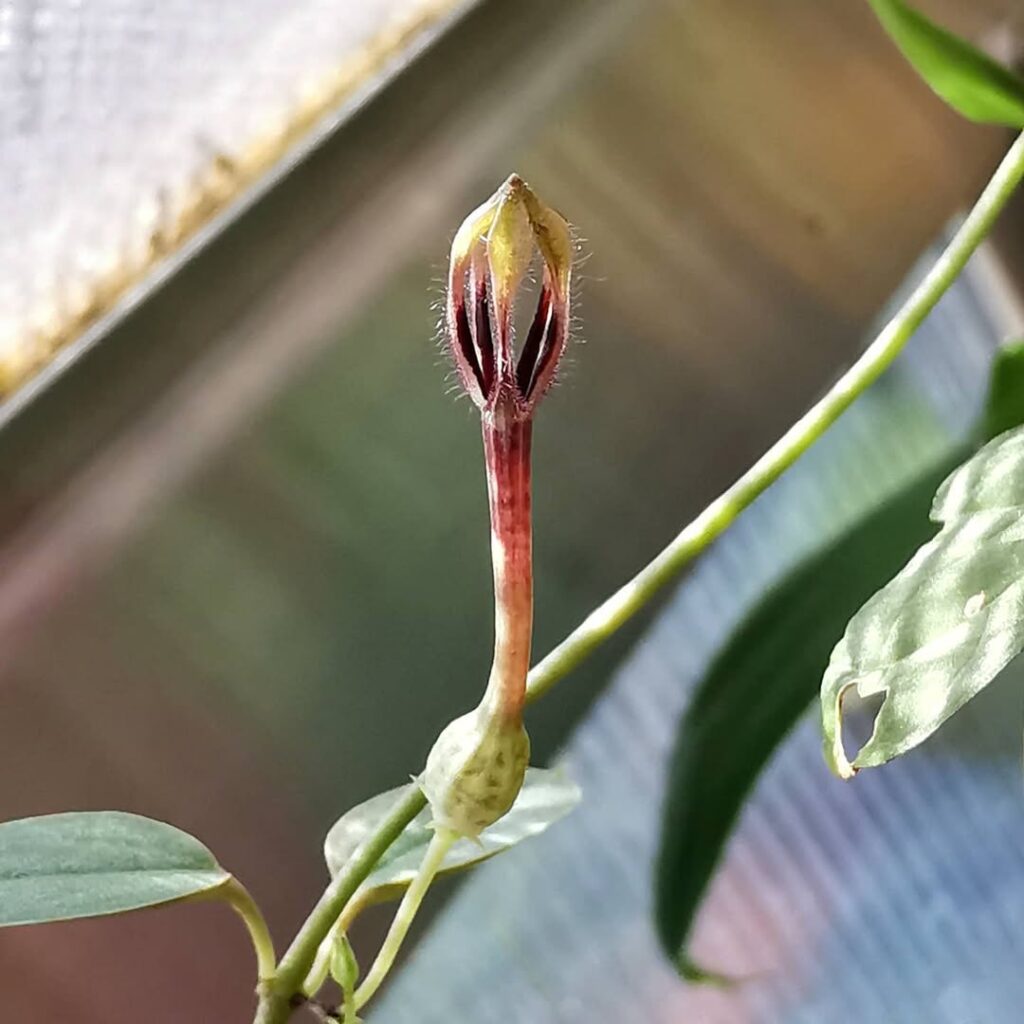
A seasonal species that sheds its leaves periodically.
Ceropegia denticulata

Features serrated, textured flowers.
Ceropegia devecchii

A unique variety with twisting floral forms.
Ceropegia dichotoma
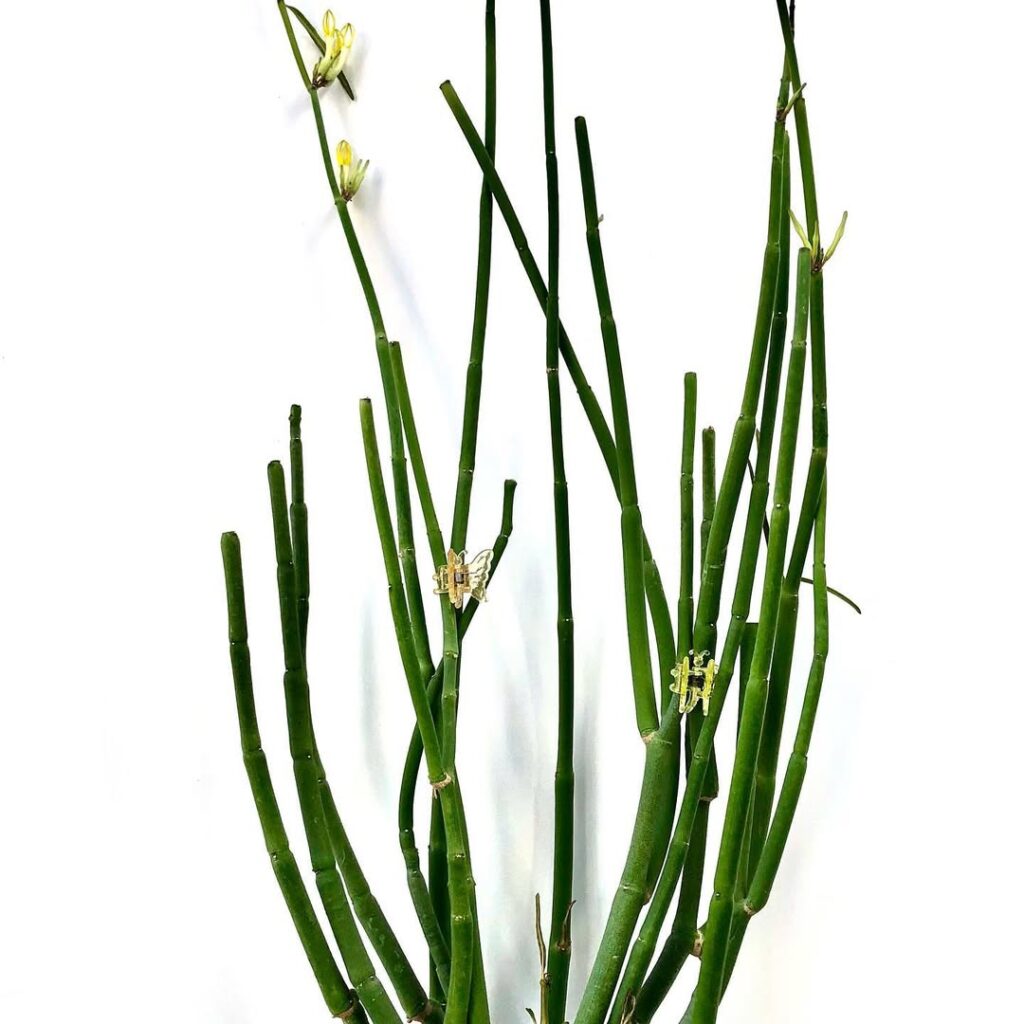
A branching species with compact growth.
Ceropegia dimorpha
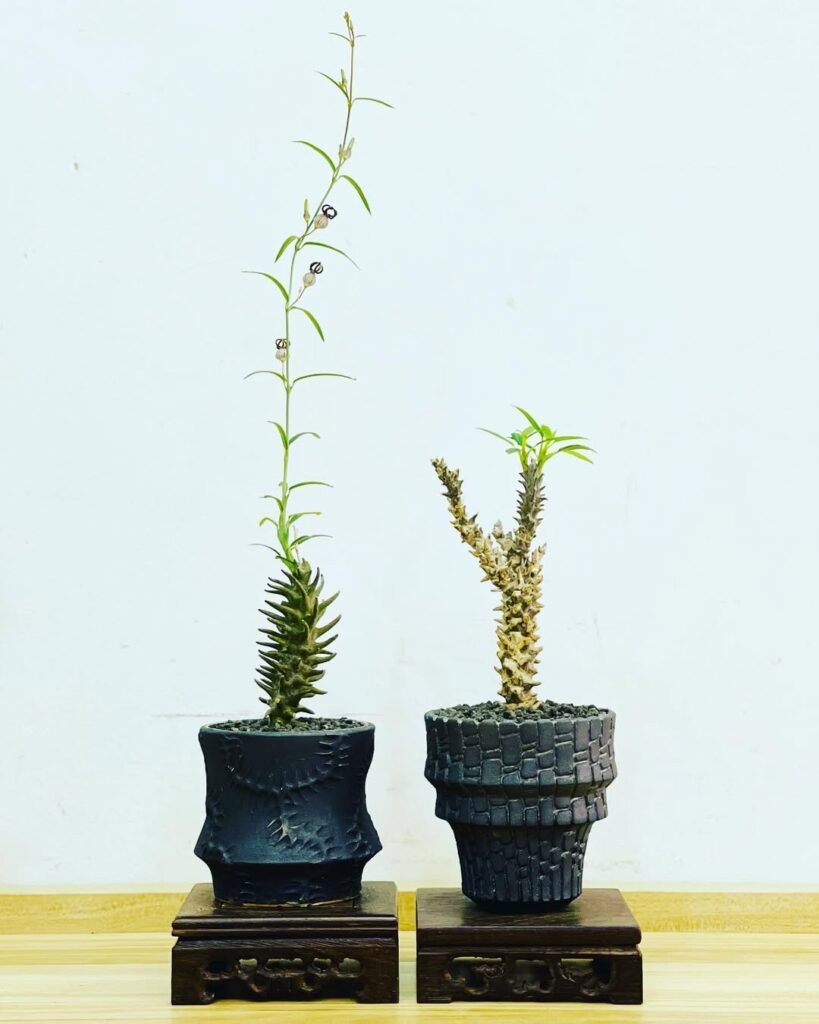
Displays two distinct flower forms depending on growth conditions.
Ceropegia distincta
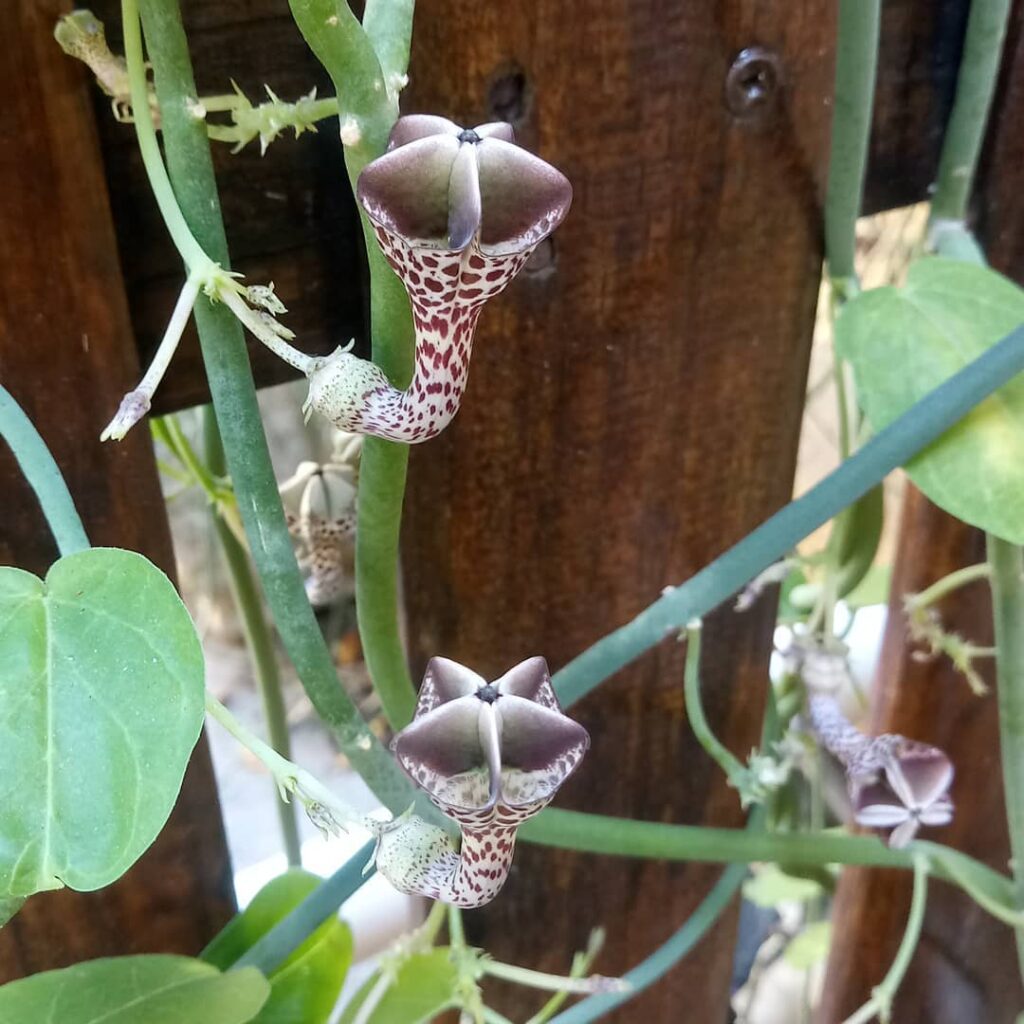
Known for its striking contrast of dark flowers.
Ceropegia fimbriata
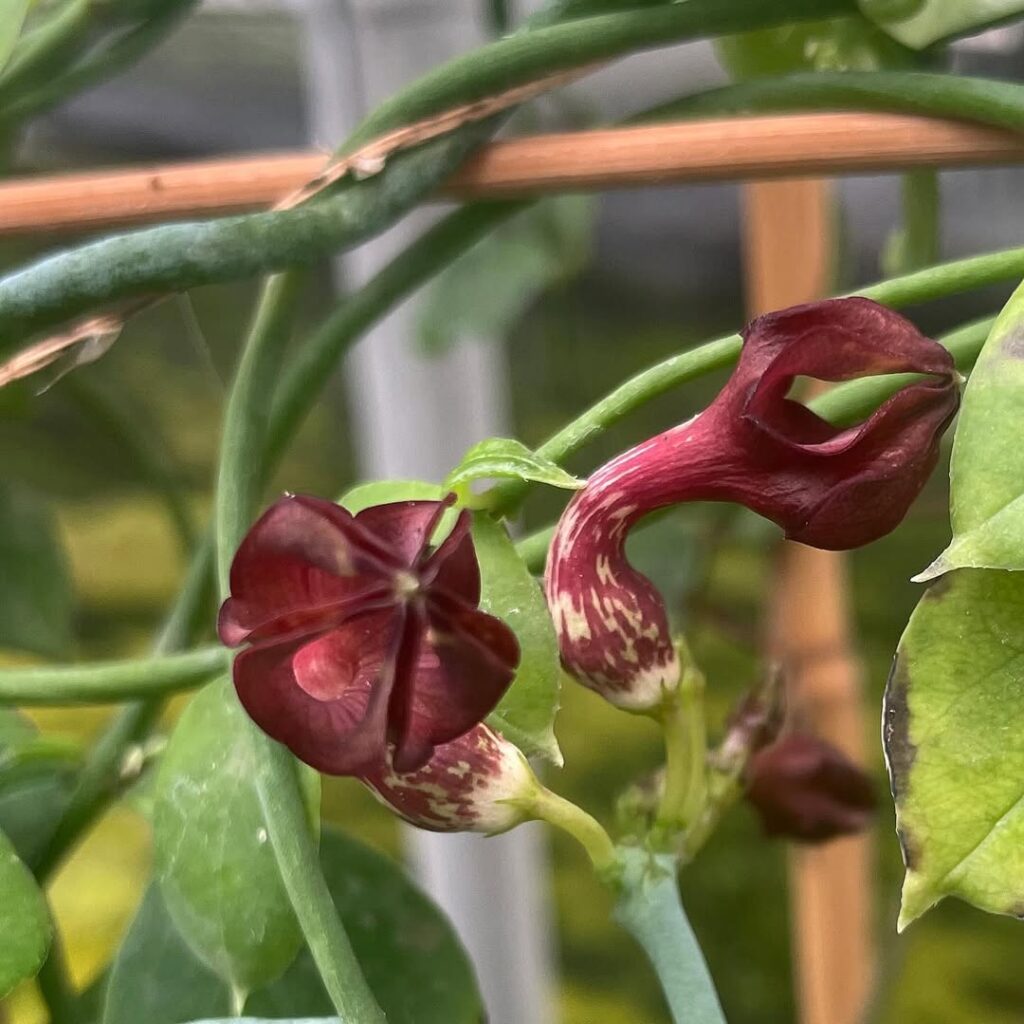
Recognized for its fringed petal edges.
Ceropegia fusca
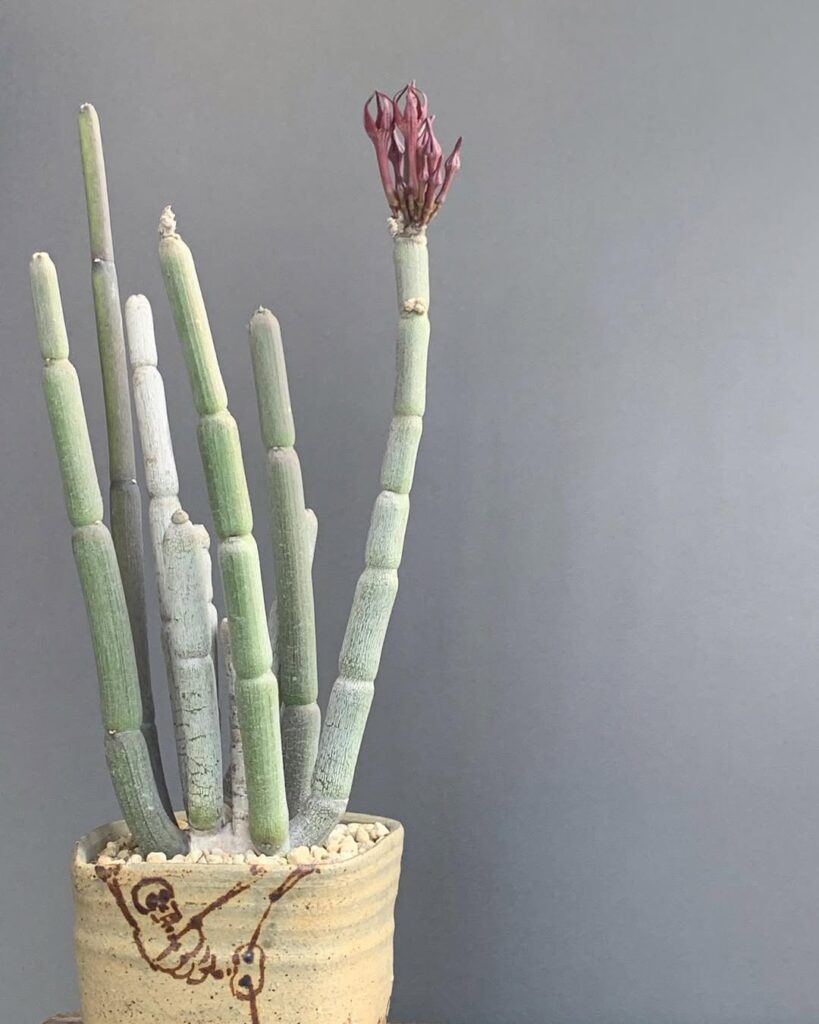
A succulent species with tall, segmented stems resembling bamboo, topped with clusters of dark pink, tubular flowers.
Ceropegia haygarthii
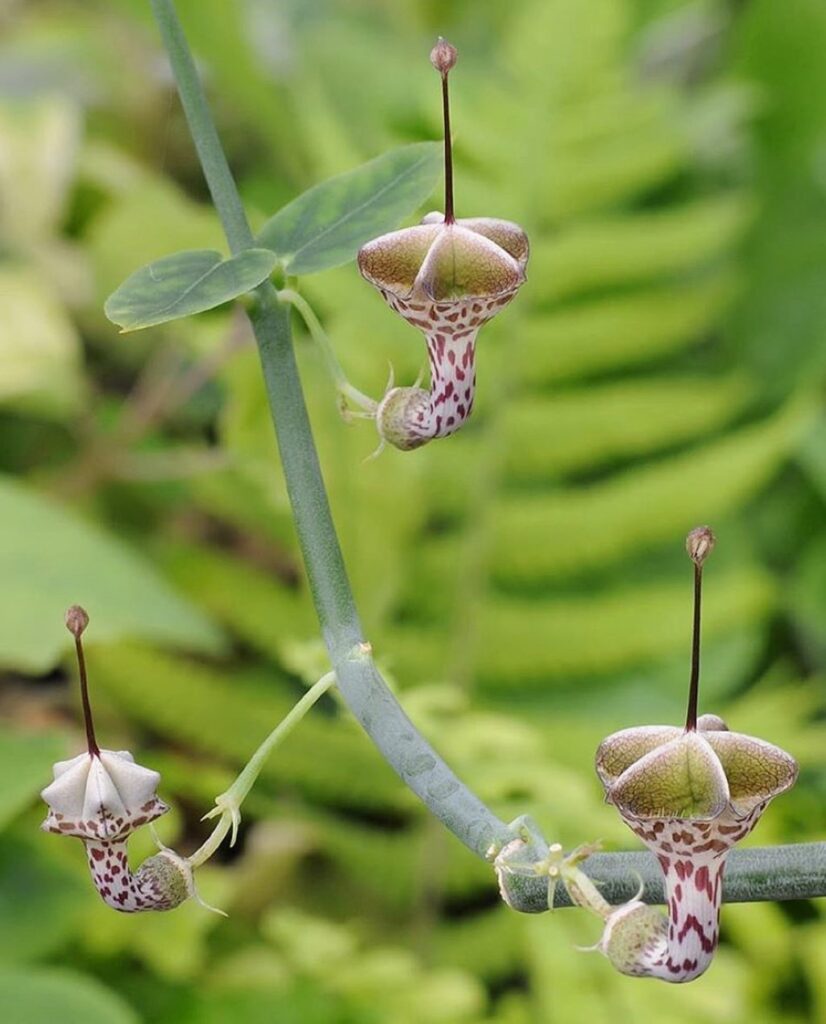
Displays star-shaped blossoms with intricate structures.
Ceropegia jainii
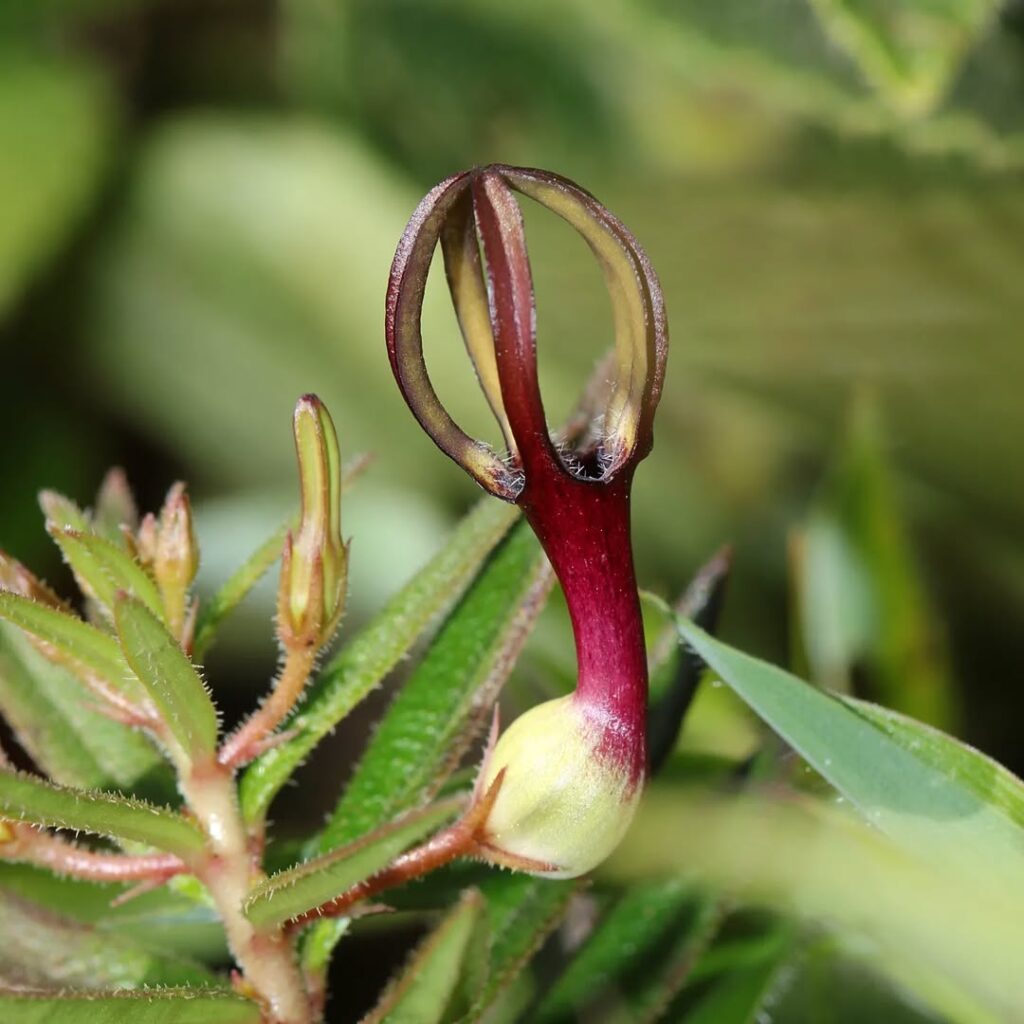
A rare find from the Western Ghats.
Ceropegia juncea
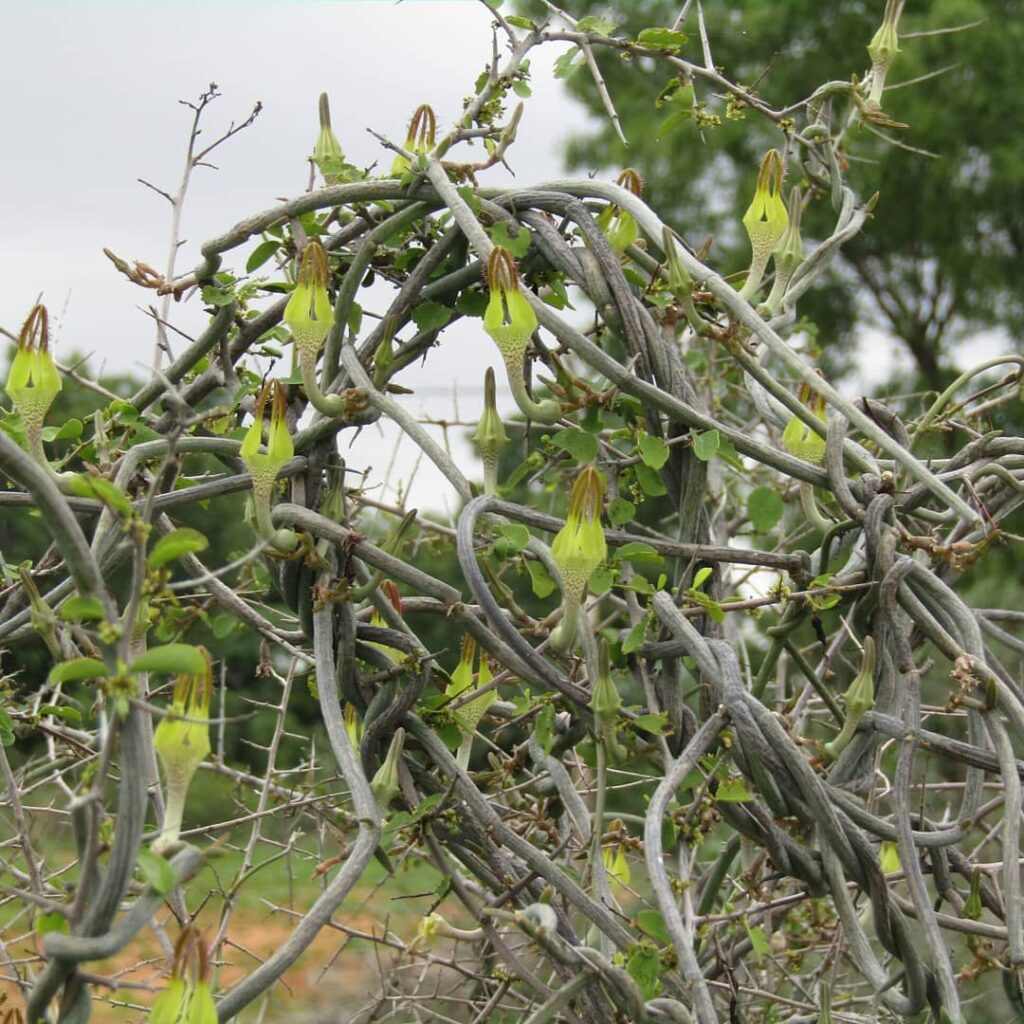
Has smooth, reed-like stems.
Ceropegia leroyi
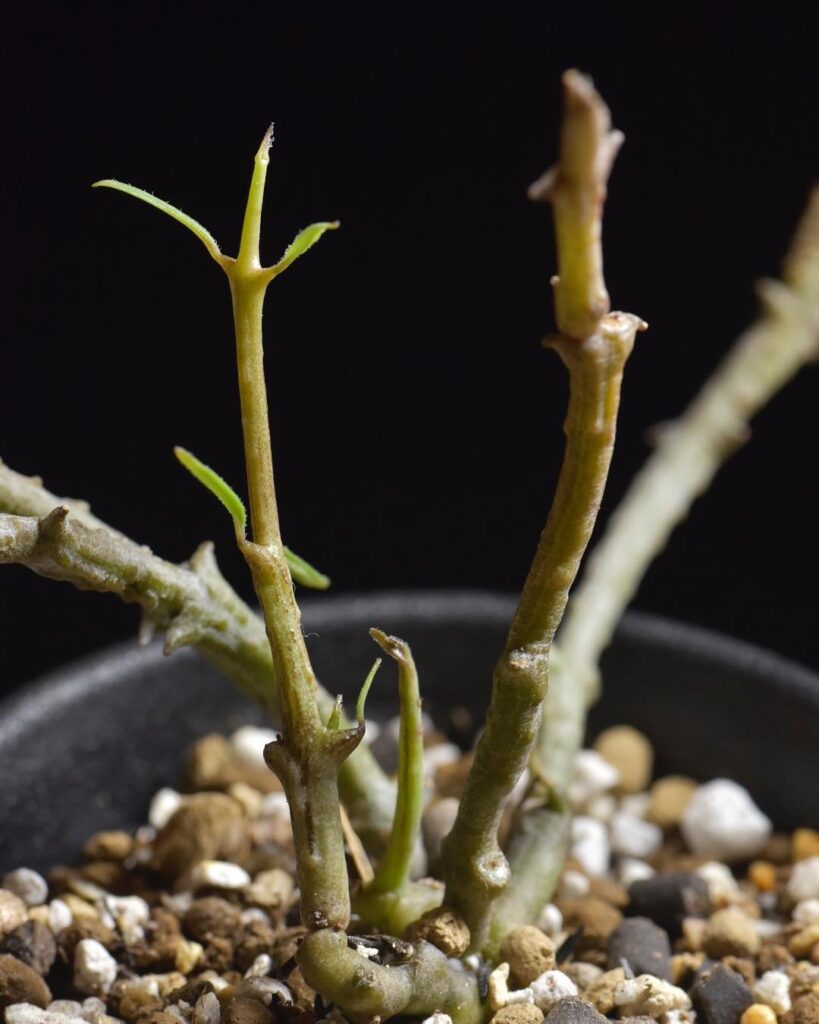
Madagascar native with thick, waxy blooms.
Ceropegia linearis
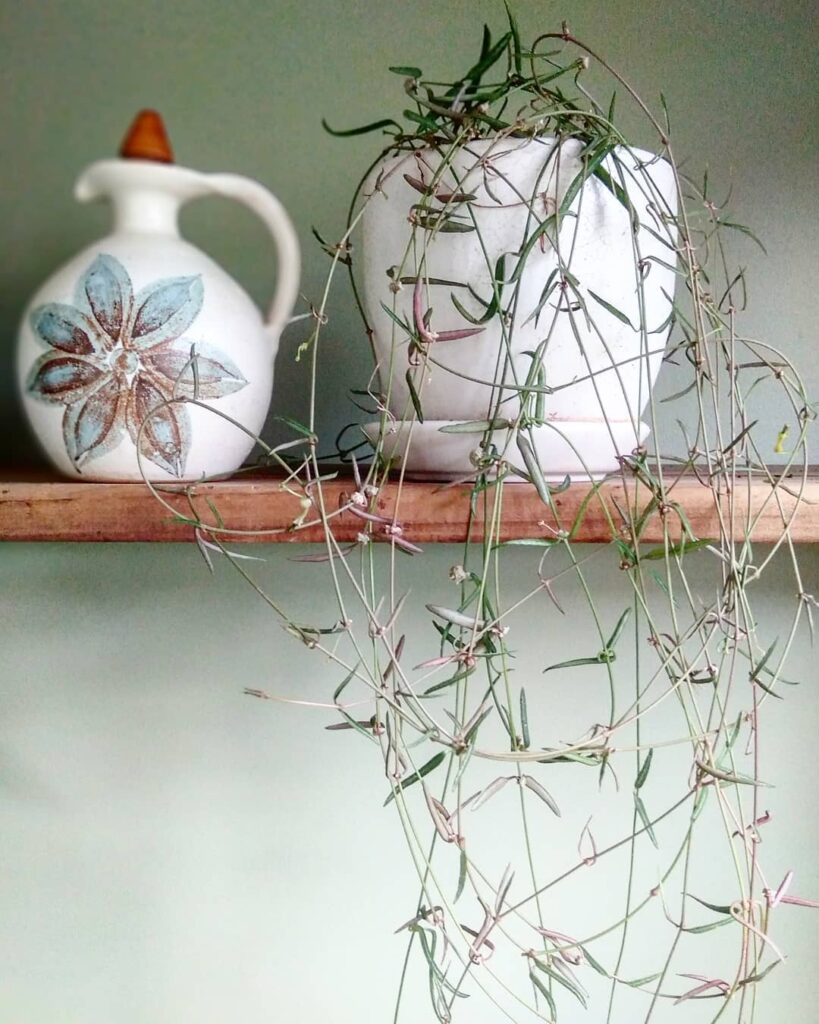
A fast-growing trailing species.
Ceropegia nilotica
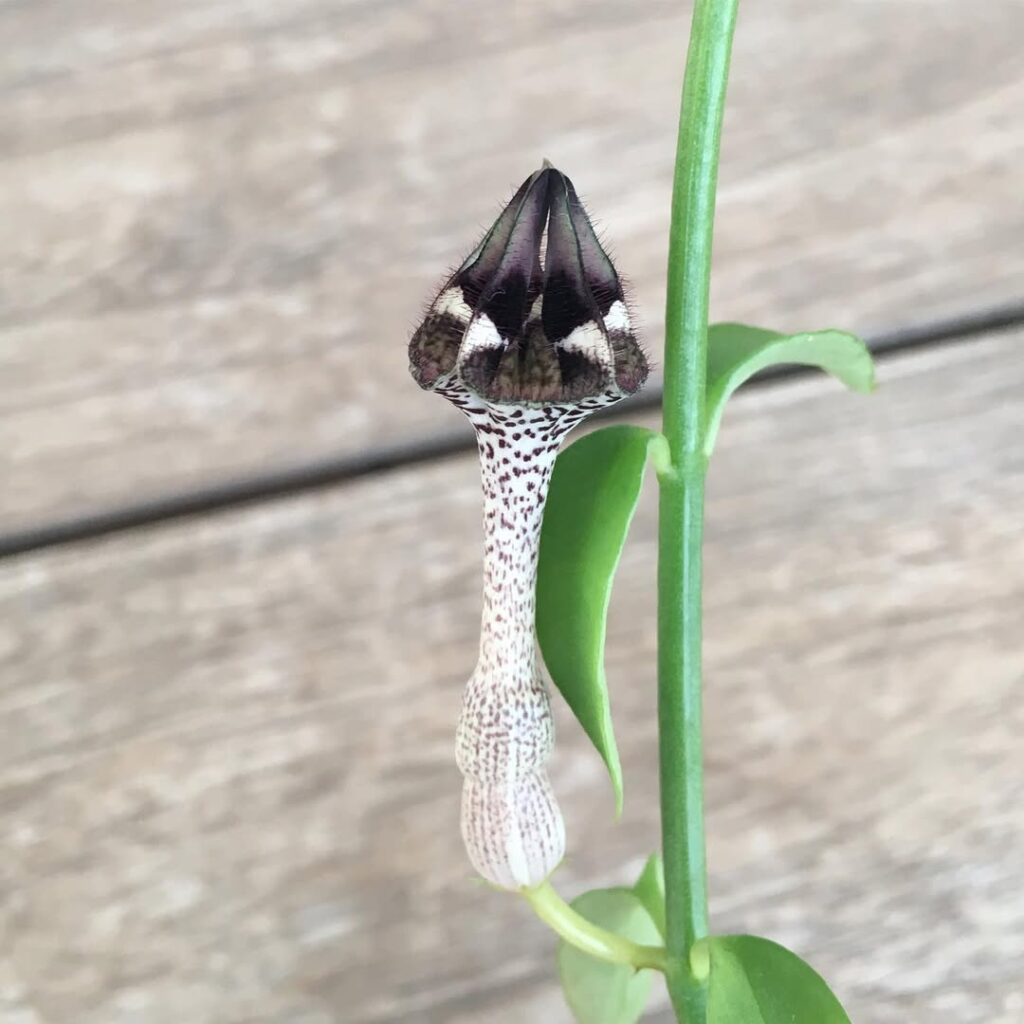
A compact climber with rich green foliage.
Ceropegia petignatii
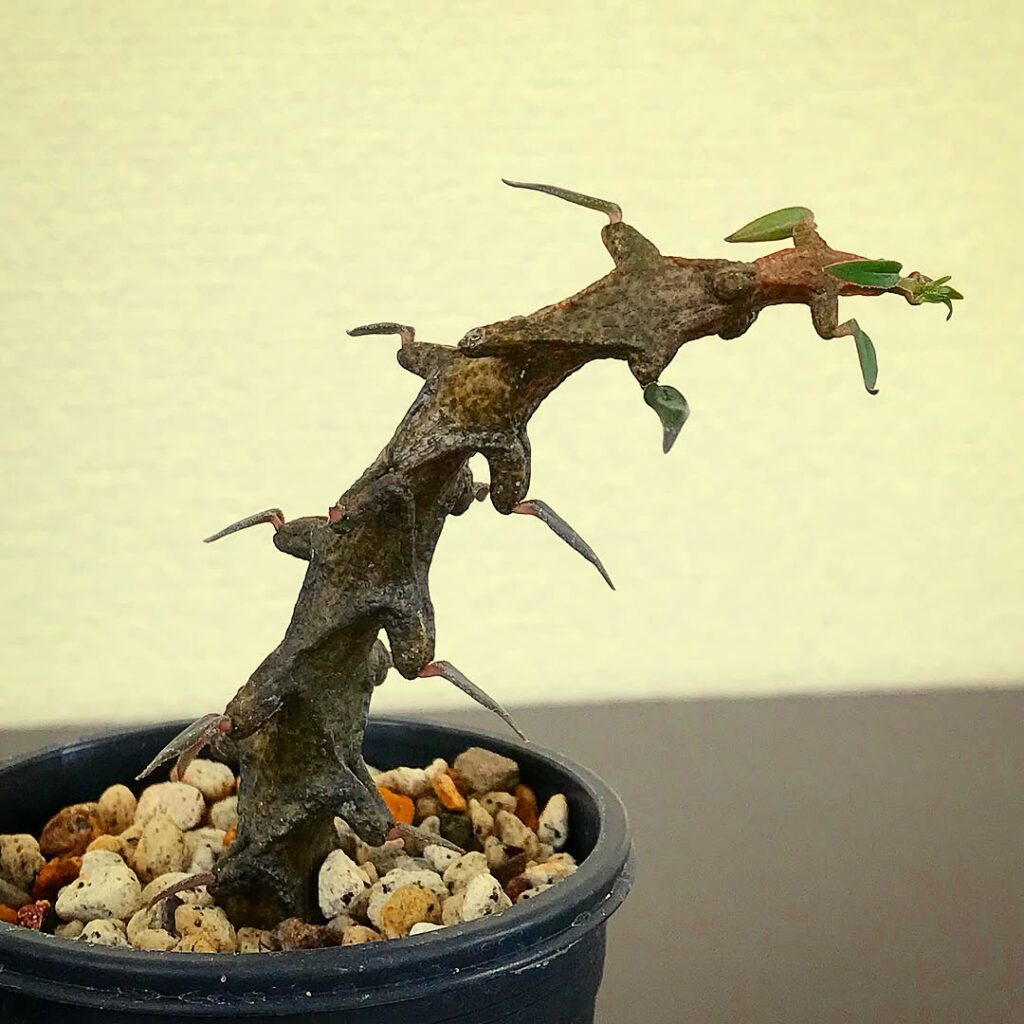
Madagascar-native with complex flower shapes.
Ceropegia racemosa
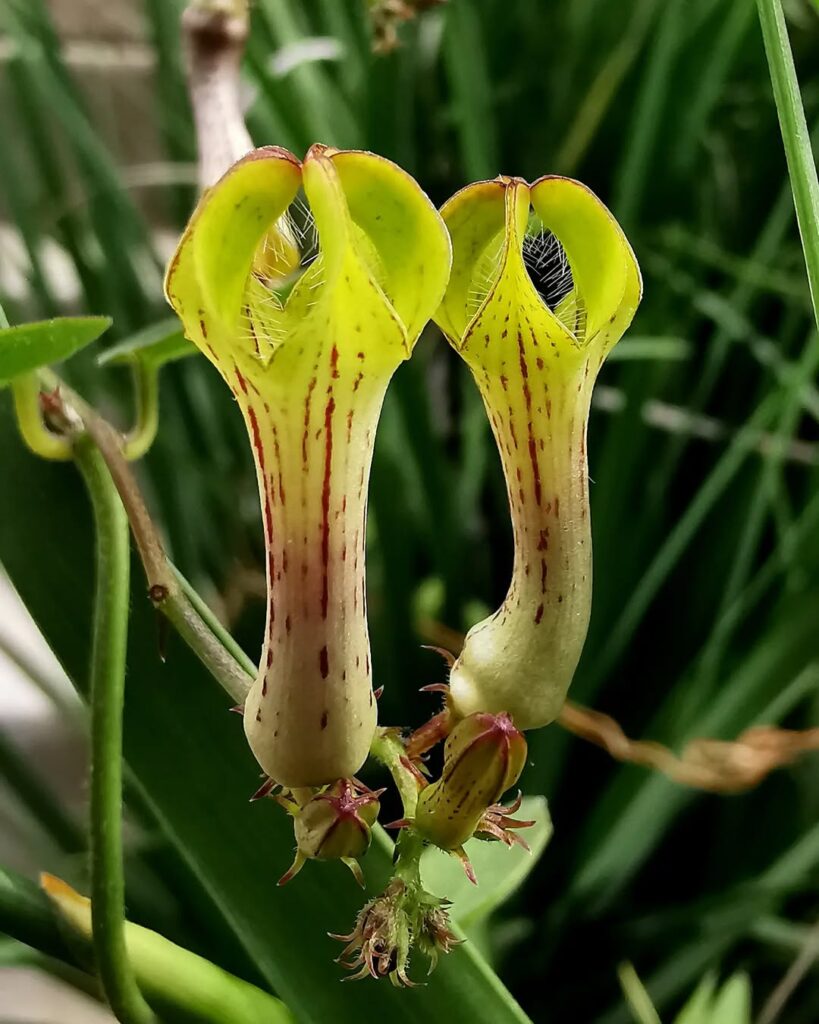
Forms clustered floral arrangements.
Ceropegia radicans
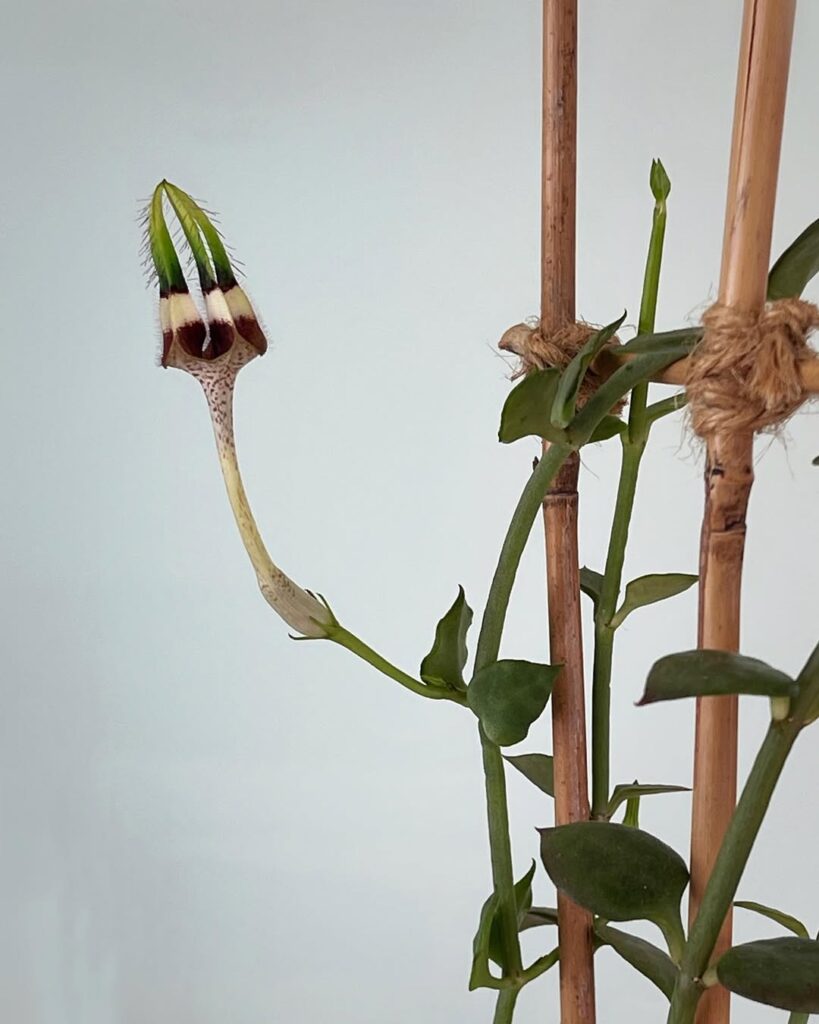
Has creeping, ground-hugging growth.
Ceropegia rendallii
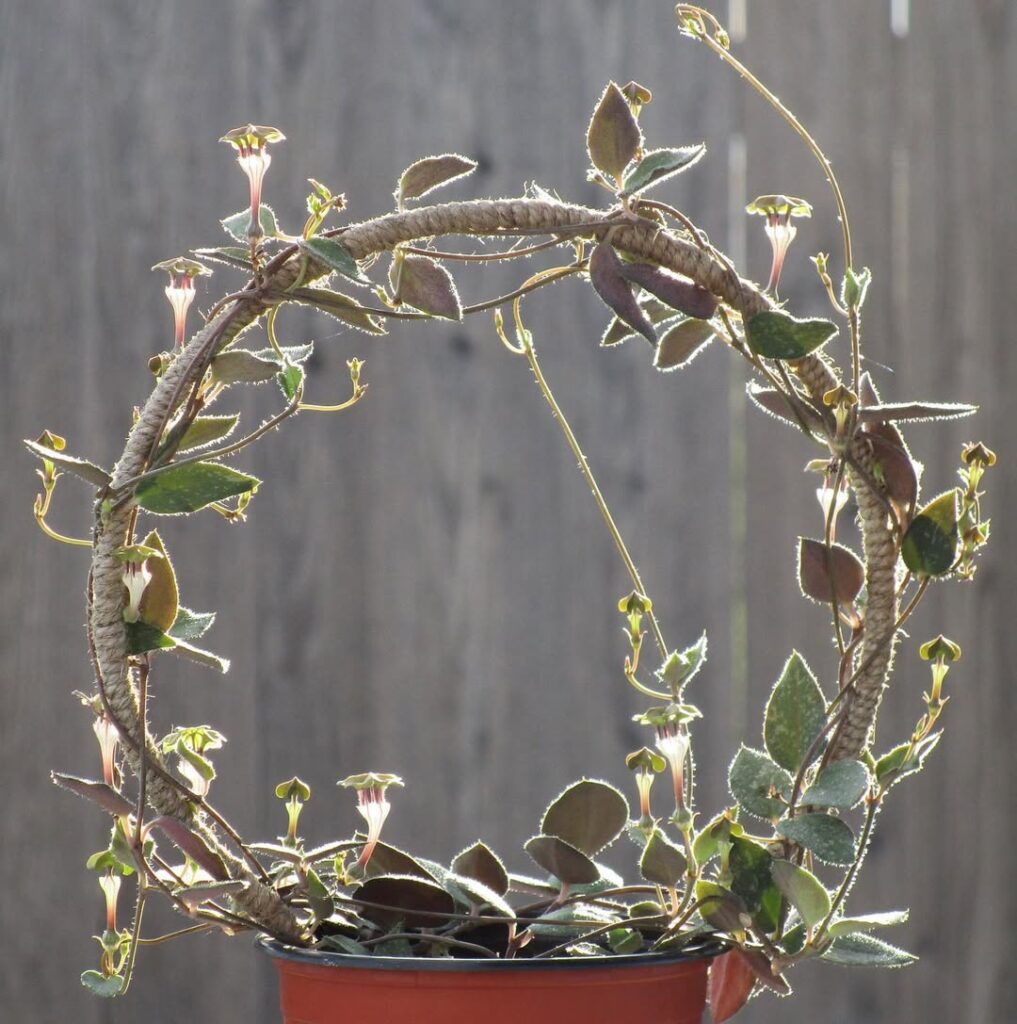
A well-branched climber with patterned flowers.
Ceropegia robynsiana
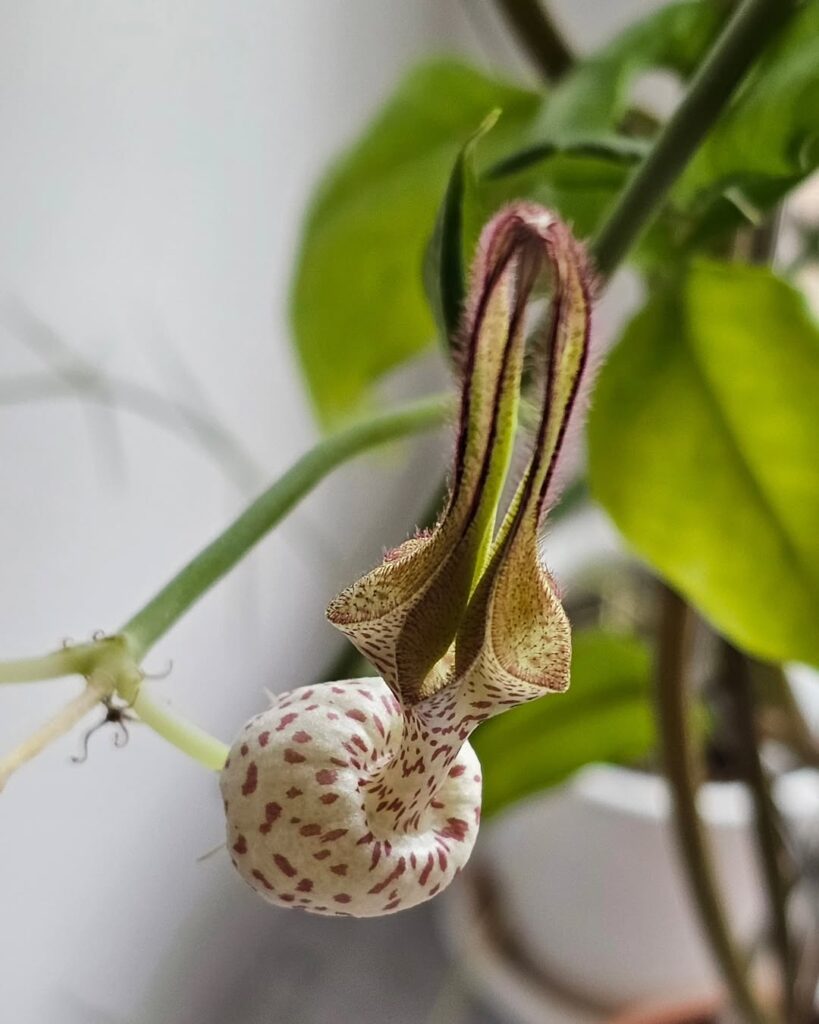
Found in Congo, featuring unusual blossoms.
Ceropegia rupicola
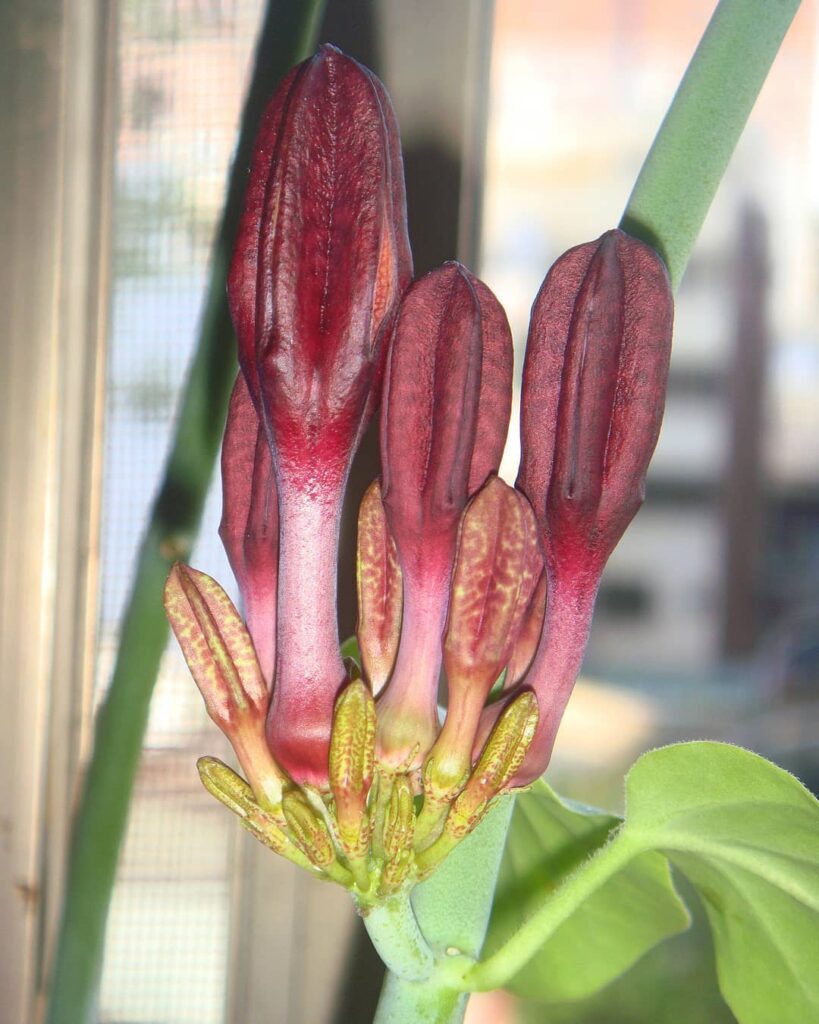
Prefers rocky habitats and dry conditions.
Ceropegia sandersonii
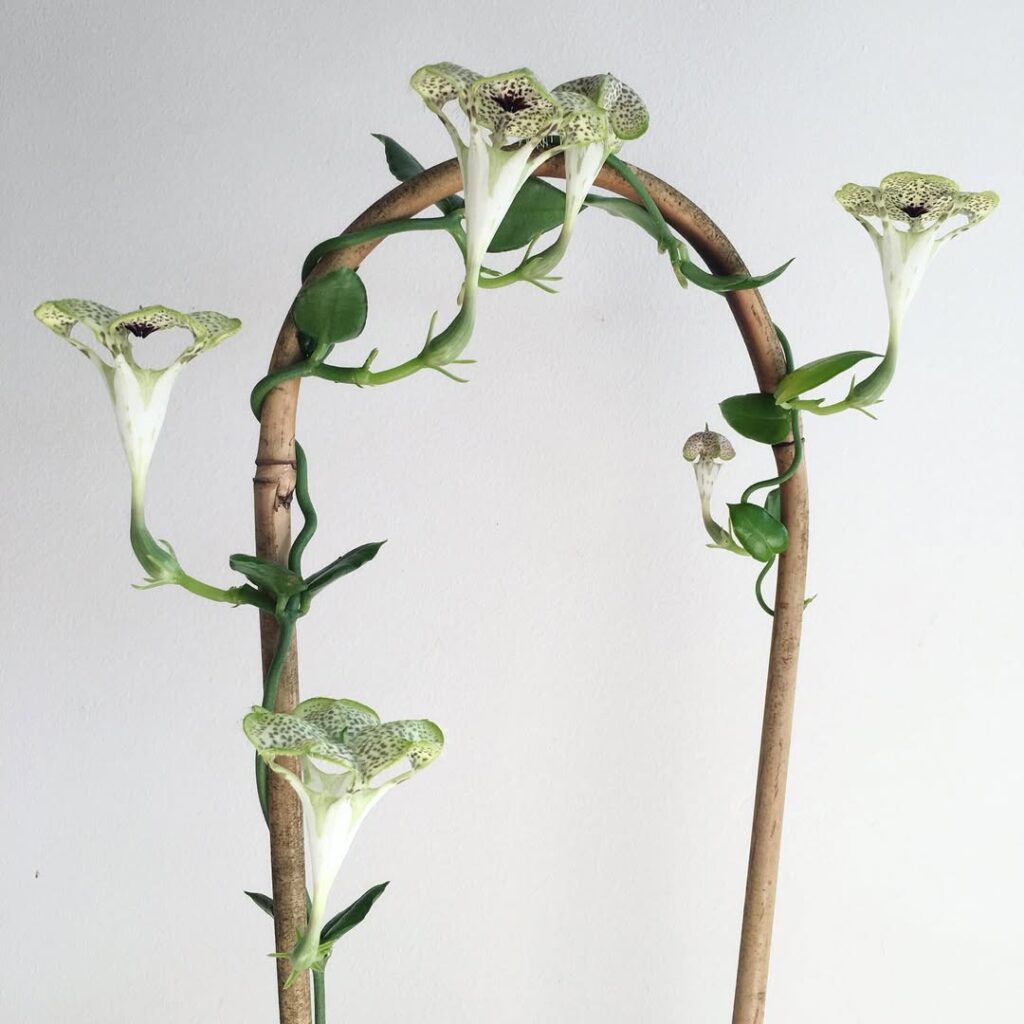
Known as Parachute Plant, with umbrella-shaped flowers.
Ceropegia simoneae
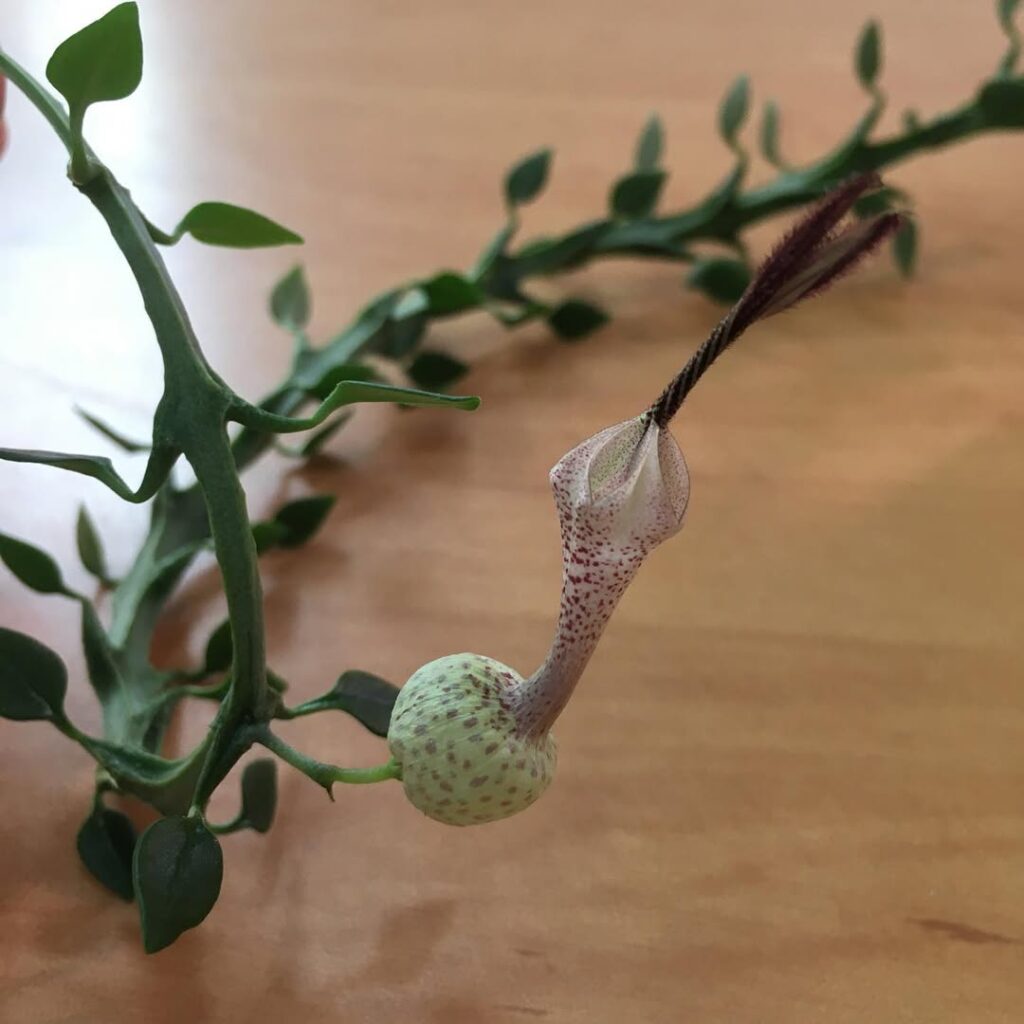
A compact variety with curled petals.
Ceropegia stapeliiformis
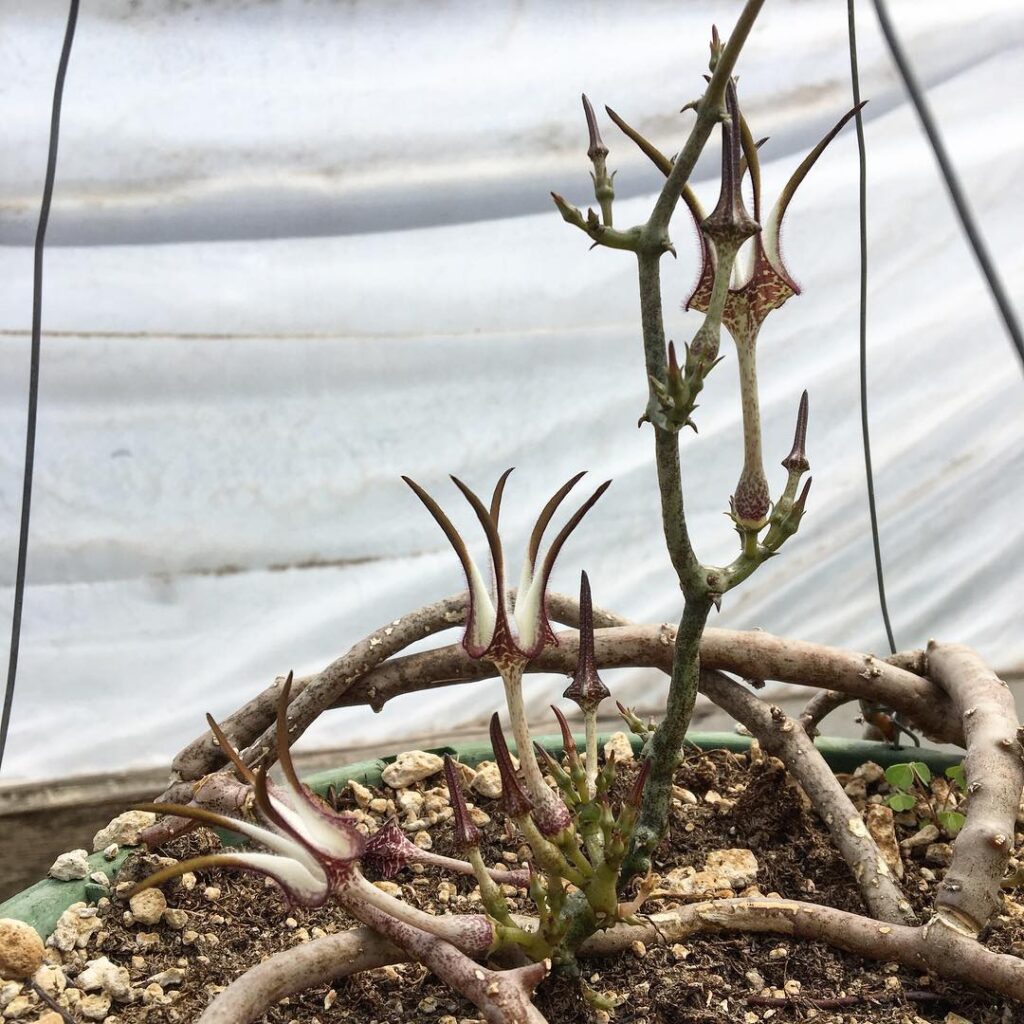
Mimics Stapelia species with its patterned blooms.
Ceropegia vincifolia
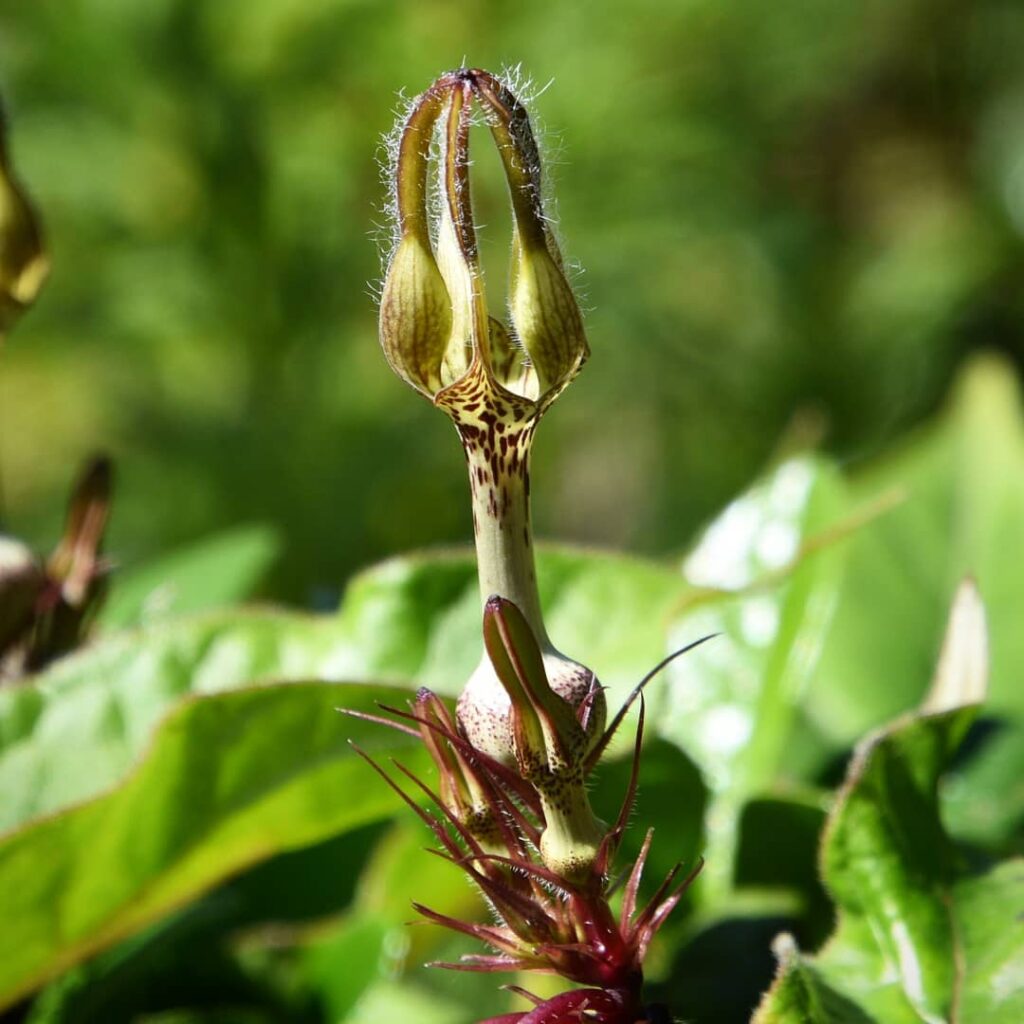
A vine with broad, ornamental leaves.
Ceropegia woodii
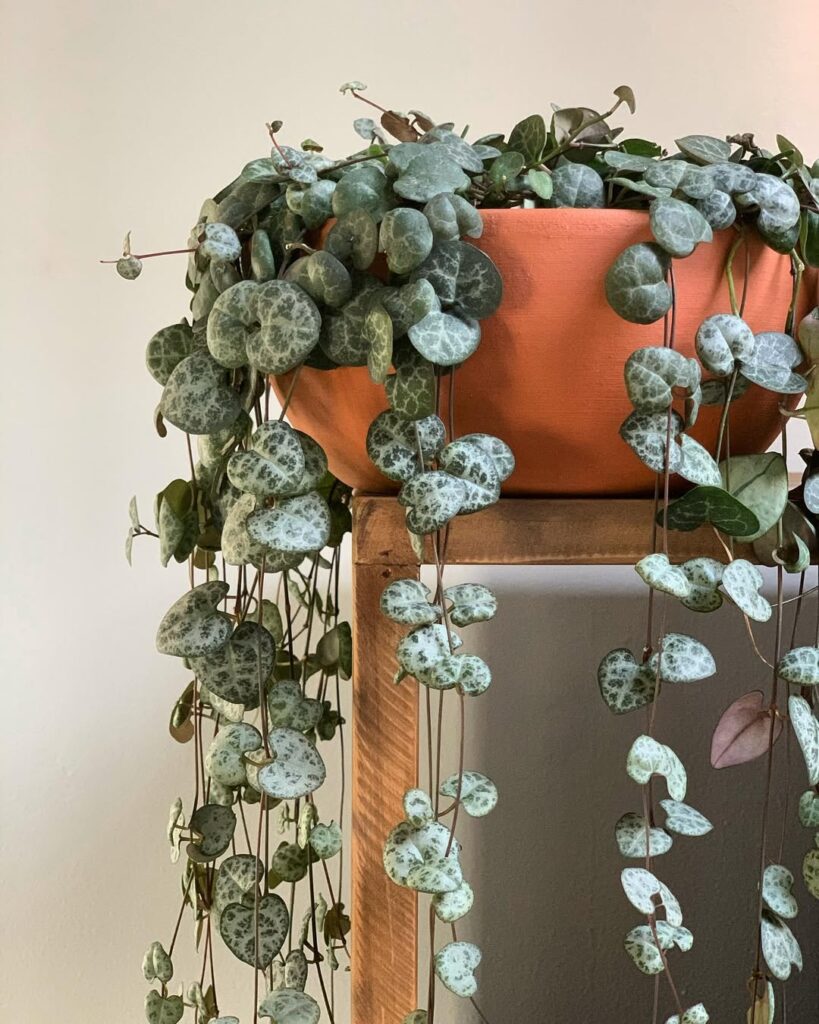
Popular as String of Hearts, with trailing vines adorned by heart-shaped leaves.
Ceropegia woodii variegata
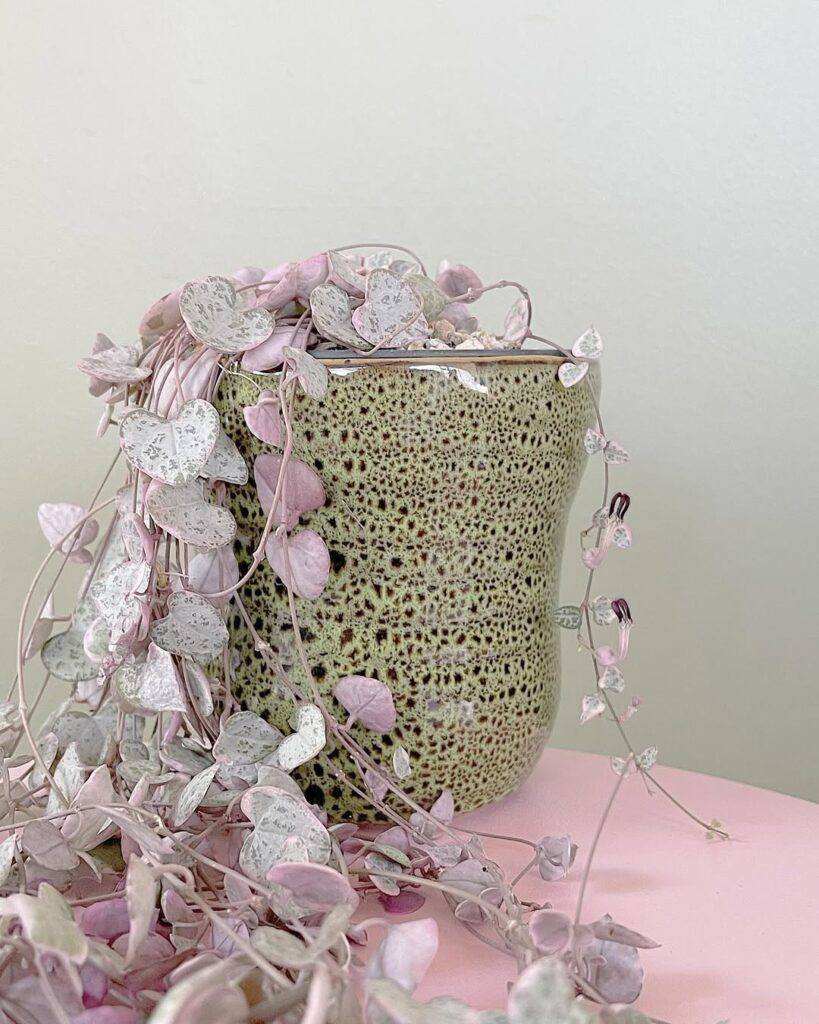
Ceropegia woodii ‘Silver Glory’
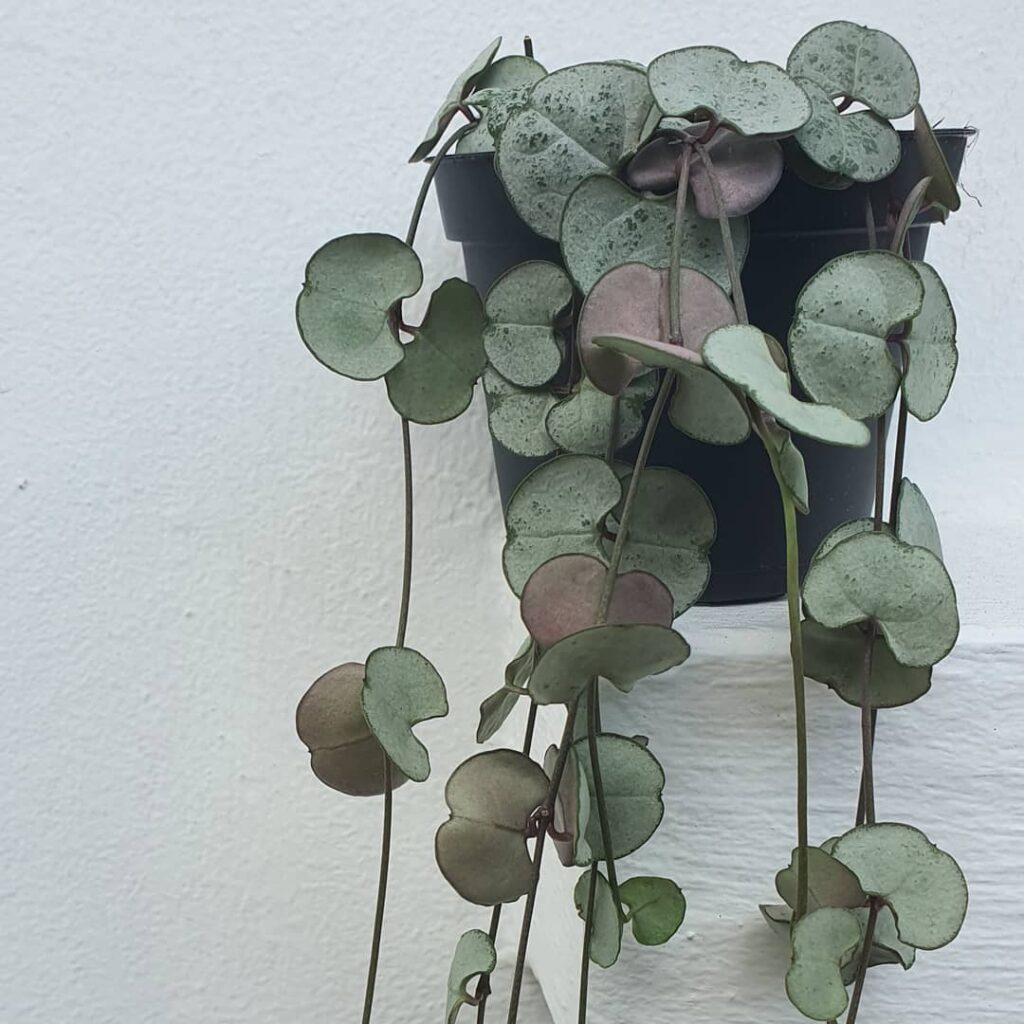
Ceropegia zeyheri
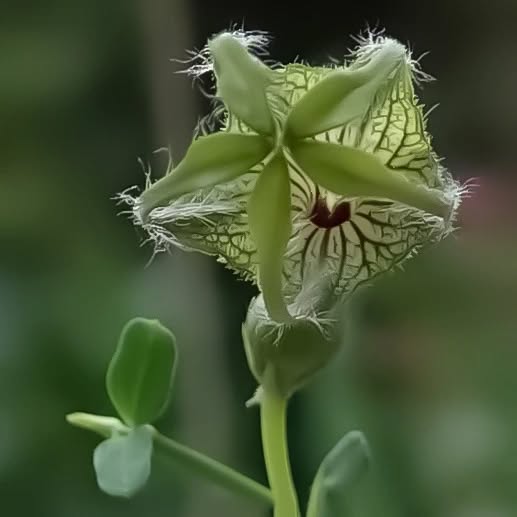
A South African variety with compact, dense foliage.
How to Care for Ceropegia Plants
Ceropegia plants are low-maintenance but thrive best under specific conditions:
Light
- Prefers bright, indirect sunlight.
- Some species tolerate partial shade, but flowering improves with adequate light.
Watering
- Water moderately, allowing the soil to dry between watering.
- Avoid overwatering, as Ceropegia species are prone to root rot.
Soil
- Use well-draining soil, preferably a succulent mix.
- Adding perlite or sand improves drainage.
Temperature & Humidity
- Thrives in warm temperatures (18–25°C).
- Prefers moderate humidity, but adapts well to indoor conditions.
Propagation Methods
Ceropegia plants propagate easily through stem cuttings and tuber division:
Stem Cuttings
- Take a healthy cutting (4–6 inches long).
- Allow the cut end to dry for a few hours.
- Plant in moist, well-draining soil.
- Keep in bright, indirect light until roots develop.
Tuber Division
- Identify small tubers growing along the stems.
- Carefully detach and plant in a shallow pot.
- Water lightly and provide warmth for sprouting.
Final Thoughts
Ceropegia plants are versatile, easy to grow, and visually stunning. Whether you’re drawn to the string of hearts (Ceropegia woodii) or the parachute plant (Ceropegia sandersonii), these species add a unique charm to any collection.
